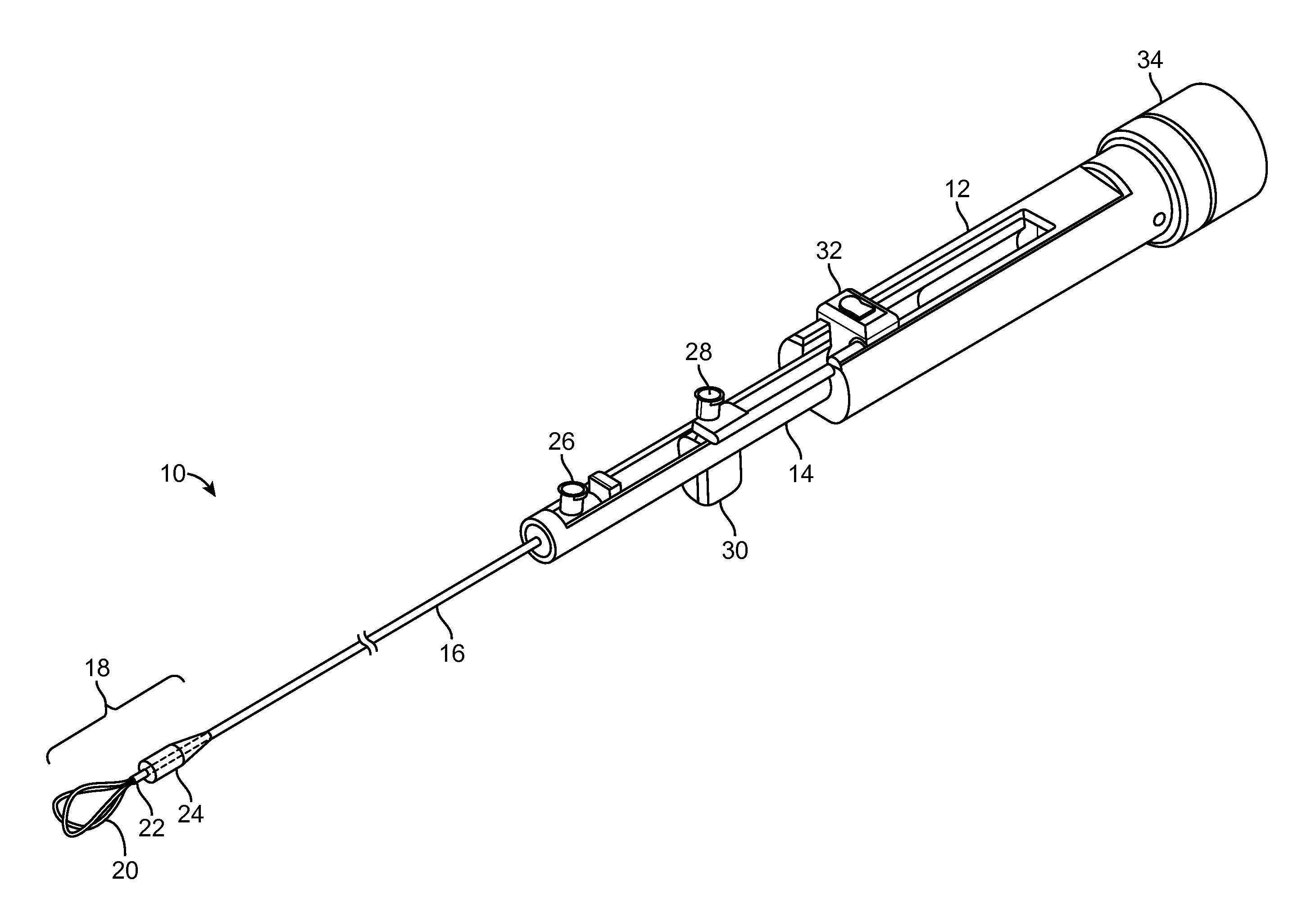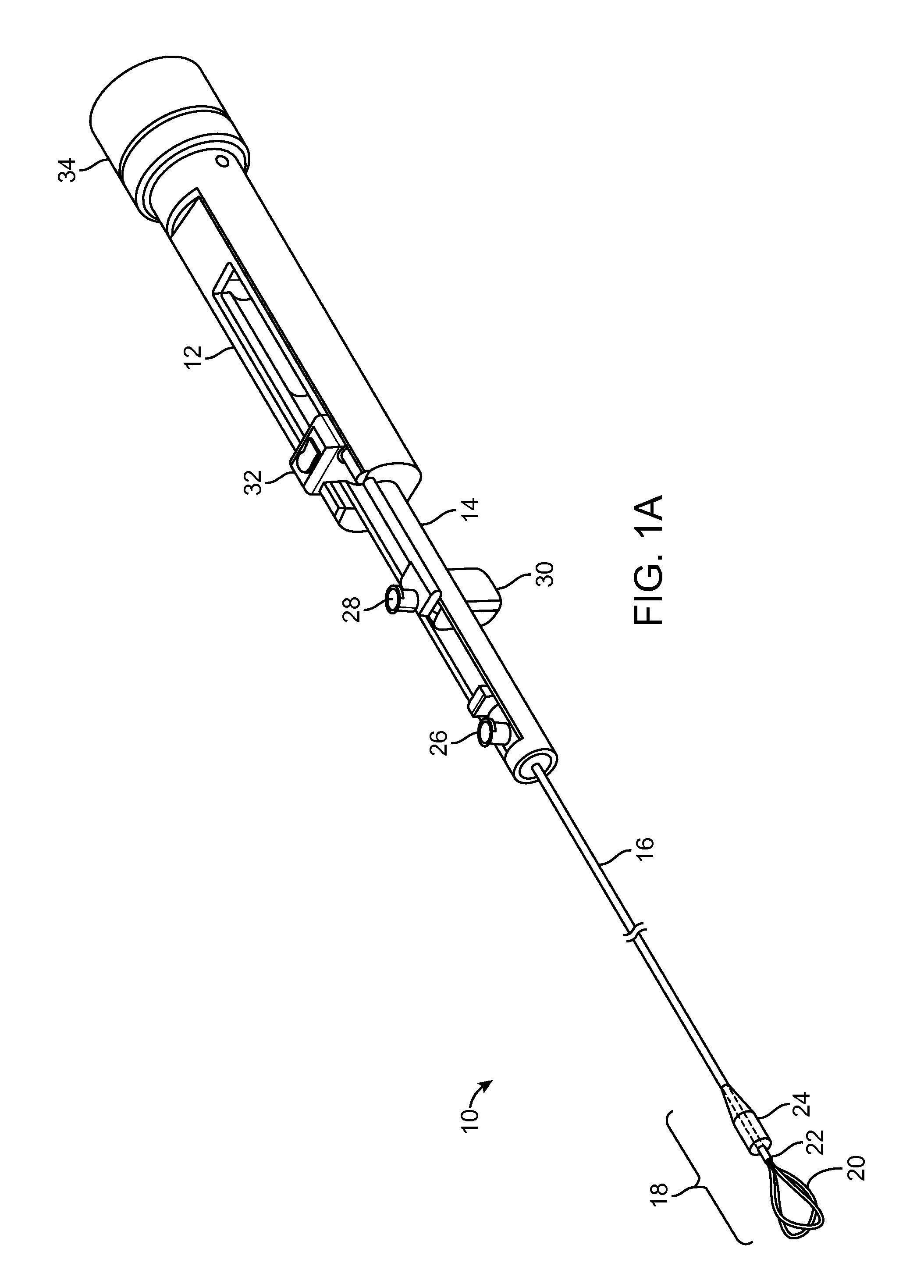Device for removing kidney stones
a technology for kidney stones and devices, applied in the field of medical devices and methods, can solve the problems of kidney stones, a significant burden on society and the health care system, and stones that get stuck en route to the bladder, and achieve the effect of reducing pain
- Summary
- Abstract
- Description
- Claims
- Application Information
AI Technical Summary
Benefits of technology
Problems solved by technology
Method used
Image
Examples
Embodiment Construction
[0047]The following description outlines various embodiments of devices, systems and methods for removing obstructions from body lumens, such as kidney stones from ureters. Although the following descriptions focus on kidney stone removal applications, some or all of the aspects and embodiments described below may alternatively be used in other body lumens for removal of other obstructions. As mentioned above, the various embodiments described herein typically include at least two and sometimes three of the following: an obstruction retention member, a vessel / lumen wall protection member, and an obstruction detection and / or identification member. Some descriptions below are directed to only one or two of these components, while other descriptions relate to embodiments of devices, systems or methods including all three components. Alternative embodiments, some of which may not be described below, may include various alternative combinations of the components described below in relati...
PUM
 Login to View More
Login to View More Abstract
Description
Claims
Application Information
 Login to View More
Login to View More - R&D
- Intellectual Property
- Life Sciences
- Materials
- Tech Scout
- Unparalleled Data Quality
- Higher Quality Content
- 60% Fewer Hallucinations
Browse by: Latest US Patents, China's latest patents, Technical Efficacy Thesaurus, Application Domain, Technology Topic, Popular Technical Reports.
© 2025 PatSnap. All rights reserved.Legal|Privacy policy|Modern Slavery Act Transparency Statement|Sitemap|About US| Contact US: help@patsnap.com



